Baby self feeding age
7 Tips for Teaching Your Baby to Self-Feed
Now that your baby has been introduced to solids and is experiencing different foods and flavors, you may be ready to help your little one begin to self-feed. But when is the right time to encourage this new skill? What are the signs of readiness that we should look for? And what are the best foods to begin with when teaching baby to self-feed? We are answering all of your questions and sharing our tips on making this milestone easier for you and your child.
When will my baby be able to self-feed?
Usually, by about nine to 12 months of age, you may notice your baby showing an interest in self-feeding. They have become more experienced with eating solids at this age and are feeling the different textures of foods between their fingers. Hopefully, they are also making attempts at bringing some of that food to their mouth to lick and taste. This usually looks like them grasping for their food with their whole hand in a raking-like motion and then trying to shove what they have in their hand all into their mouth. You may even notice your baby trying to grab the food with their thumb and forefinger, which is an important fine motor skill called the pincer grasp. These are all good signs and are great indications that your baby is ready to begin self-feeding.
What are the signs that my baby is ready to self-feed?
There are a few readiness signs to look for that will indicate it’s the right time to begin teaching your baby to self-feed:
- Grabbing the spoon while you are holding it during mealtime.
- Reaching for their food on their plate, bowl, or tray.
- Reaching for your food or plate.
- Practicing the pincer grasp — bringing food and other items to their mouth during mealtime or playtime.
- Pushing your hand away when you try to feed them.
It’s important to pay attention to these readiness signs and not just rely on your child’s age. If a baby is 9 or 10 months old but does not show these readiness signs, parents should wait until they do. But once your baby does show these self-feeding readiness signs, it’s important to provide many opportunities for them to practice this skill. Allow them to try and try again. That’s how they will learn and master this skill!
But once your baby does show these self-feeding readiness signs, it’s important to provide many opportunities for them to practice this skill. Allow them to try and try again. That’s how they will learn and master this skill!
What are the best foods to start with self-feeding?
The best foods to give your baby to practice self-feeding are easy for them to grab, hold, pick up, and bring to their mouth. Here are some recommendations to try:
- Stonyfield Organic YoBaby Yogurt Pouches
- Soft cooked carrots, sweet potatoes, butternut squash, or peas
- Small pieces of soft, ripe bananas, avocados, kiwi, or peaches
- Soft-cooked apples or pears
- Soft-cooked whole grain pasta
- Diced pieces of cooked chicken, turkey, or fish
- Cubes or strings of cheese
YoBaby® yogurt pouches are a great option for multiple reasons. First, they are easy for your little one to pick up and bring to their mouth. Second, they nourish little tummies with real fruit, live and active cultures, vitamin D, calcium, protein, and prebiotics! Third, the consistency is creamy and delicious — easy for baby to eat and swallow.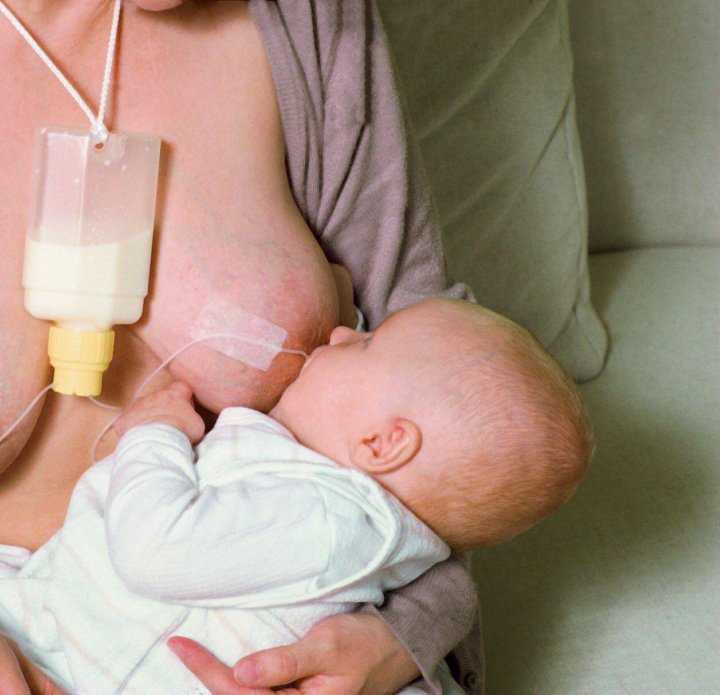 And four, it combines whole milk yogurt and oats for a quick meal for baby!
And four, it combines whole milk yogurt and oats for a quick meal for baby!
All foods should be soft, easy to mash, and big enough for your baby to pick up but small enough to prevent them from choking.
What are the foods to avoid when my baby is beginning to self-feed?
Foods that should be avoided when beginning to teach your baby to self-feed are foods that pose a potential risk of choking.
- Nuts
- Popcorn
- Raw carrots
- Whole grapes
- Raisins
- Hot dogs
- Portions of food that are too large
Your baby doesn’t have all of his teeth, so all foods should be soft. Once your baby’s 2-year molars come in, your child will be able to chew harder food properly. If you want to test to see which foods are safe and soft enough for your baby to eat, take a piece of their food and try to mash it between your fingers. If you cannot easily mash it, it’s probably too hard for your baby to chew.
How do I teach my baby to self-feed?
Now that you know your baby is ready to start self-feeding and you know which foods are best to start with, how do you begin? Here are some helpful tips.
The more opportunities you give them to practice, the quicker they will learn and master self-feeding. Give them opportunities to try self-feeding with their hands and with utensils.
2. Begin with encouraging hand feeding.Before introducing feeding utensils to your baby, encourage her first to use her hands to move the food toward her mouth. A good way to start is to place a yogurt pouch or a few pieces of food on your baby’s highchair tray. Encourage her to reach for it, feel it, and play with it with her pincer grasp. It may look as if she isn’t doing much and not eating, but that’s actually how she starts to learn.
3. Also, introduce and encourage baby to use utensils.It’s never too early to introduce utensils to your baby! It’s good for them to get used to utensils during mealtime. In the beginning, I recommend having two spoons–one for you to help feed baby a few bites and one for them to hold and practice using. He may even try to imitate your motions by dipping his spoon into the food and maybe attempting to bring it to his mouth.
He may even try to imitate your motions by dipping his spoon into the food and maybe attempting to bring it to his mouth.
Another thing you can try is pre-loading his spoon with food and handing it to him. This can help him practice balancing the food on the spoon as he brings it to his mouth. With this, I recommend using thicker foods like yogurt and oatmeal. They are good practice foods since they stick more easily to the spoon. Overall, be sure to allow plenty of practice opportunities with both utensils.
4. Stay close to your baby during meals.As your baby practices self-feeding, it’s important that you stay close and monitor her. We don’t want any food getting stuck in her nose or anywhere else, and you want to ensure that she is tolerating all of the new textures and flavors. By staying close, you will also monitor how much or little she is putting in her mouth and eating. These are all reasons why remaining by her side is necessary. She’s learning something new, and she needs your help and guidance!
5.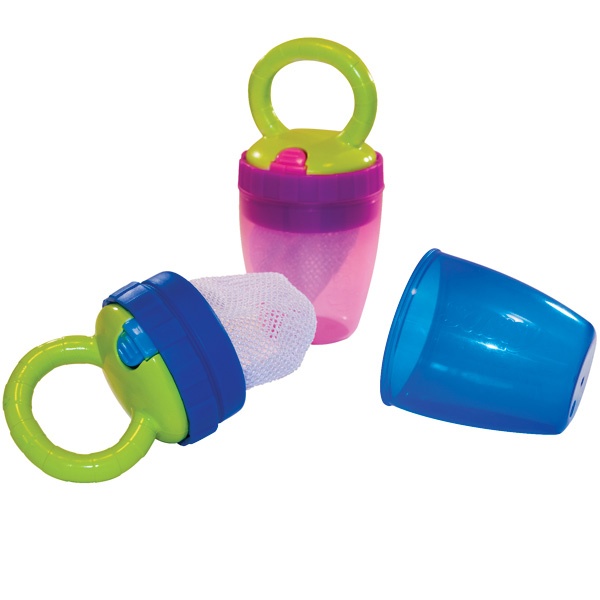 Be prepared and expect a big mess.
Be prepared and expect a big mess.When babies are allowed to touch and explore new foods and feeding themselves, things get messy. And that’s okay! Don’t stress about it, and expect the mess. Have your baby wear a baby apron, put a towel on the floor if you’re worried about food falling, or undress your baby down to her diaper! Also, have baby wipes and power towels close by. You may even have to give your baby a bath after mealtime. Again, this is normal. A messy meal is still a success because that means your baby was trying to self-feed. Soon enough, she’ll get better at handling the different foods and make less of a mess. This is all a part of the process.
6. Eat together as a family.One of the best ways to teach your baby to self-feed is to have them watch the family eat. Babies are learning new things all the time, and they learn from modeled behaviors. By watching how their parents and siblings use their utensils and eat their food, babies want to mimic the same behaviors. They gain confidence watching you and believe that they can do it too! If you are feeding your baby at a different time than the rest of the family, they are missing out trying to mimic your movements with utensils and foods and observing other appropriate mealtime behaviors.
They gain confidence watching you and believe that they can do it too! If you are feeding your baby at a different time than the rest of the family, they are missing out trying to mimic your movements with utensils and foods and observing other appropriate mealtime behaviors.
It takes time to learn how to self-feed, so be patient with your little one. Don’t try to rush the process or mealtimes. Your baby should set the pace because they understand their hunger and fullness cues. This is why it’s good to allow plenty of time for their meals. With lots of practice and patience, your baby will be self-feeding in no time!
What if my baby starts gagging or choking?
When teaching your baby to self-feed, expect some gagging to occur. Gagging is a natural occurrence and is the body’s natural defense against choking. This happens when babies have too much food in their mouth and are presented with new textures and flavors.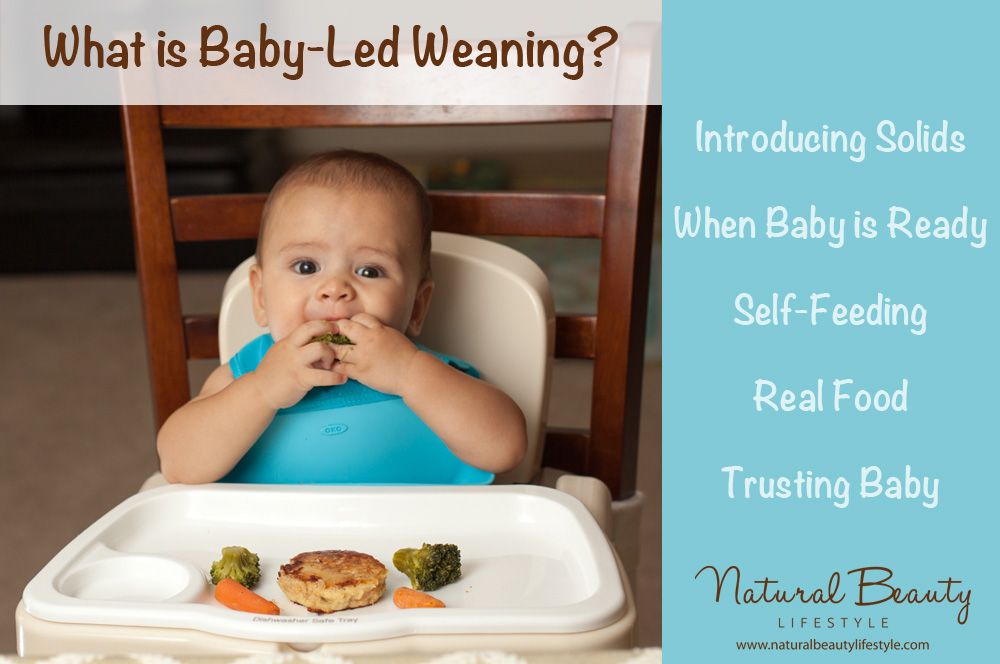 As long as they aren’t gagging too much during mealtime or causing them distress, gagging is common. However, if they are frequently gagging when trying to self-feed, this can cause them to have negative associations with eating or eating aversions. If this happens, avoid giving those foods or preparing those negative associations at the next mealtime.
As long as they aren’t gagging too much during mealtime or causing them distress, gagging is common. However, if they are frequently gagging when trying to self-feed, this can cause them to have negative associations with eating or eating aversions. If this happens, avoid giving those foods or preparing those negative associations at the next mealtime.
Choking, however, is different and much more serious than gagging. Choking is when a piece of food gets lodged in the airway. Your baby may first begin coughing, then become silent. He will show difficulty breathing and will not be able to cry or make sounds due to the food obstructing his airway. This is a serious and life-threatening matter. This is why the types of food, foods’ sizes, and the consistency of foods are important when teaching your baby to self-feed.
Final Thoughts
This is an exciting time in your baby’s development. Remember, self-feeding is a learning process and takes time. If you see that your baby isn’t able to self-feed enough foods to fill them up during mealtime, which is common in the beginning, alternate feeding them purees and finger foods to fill them. I also suggest offering them a YoBaby yogurt pouch to fill them and allow them to continue practicing self-feeding! In the meantime, take lots of pictures of this fun and messy milestone and enjoy the process!
I also suggest offering them a YoBaby yogurt pouch to fill them and allow them to continue practicing self-feeding! In the meantime, take lots of pictures of this fun and messy milestone and enjoy the process!
Note that the views and opinions expressed in this post are solely that of Baby Chick and do not necessarily reflect the opinions and views of Stonyfield. The content provided and in any linked materials are not intended and should not be construed as medical advice. If you have any questions about health or nutrition, we always think it’s best to consult with your doctor or healthcare practitioner.
4 Mistakes that Slow Baby Self Feeding
Feeding your baby real food is an important step for all parents. But baby self feeding is a goal for all parents, especially during the first year of life.
The stakes are high for developing healthy food preferences and learning to eat, so don’t let these four common mistakes slow your baby down.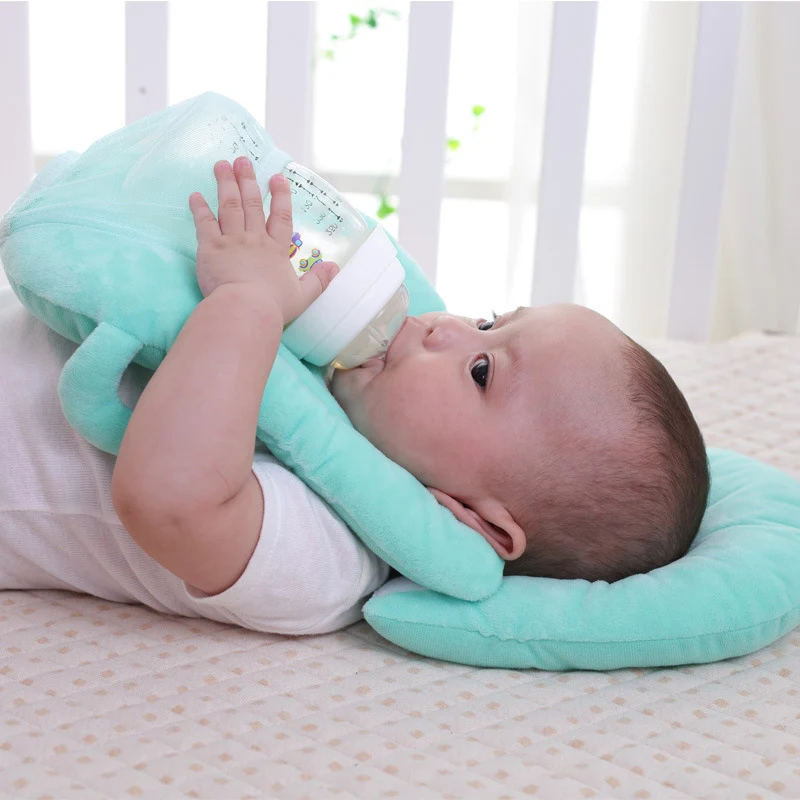
Baby feeding and the journey that goes with it is not always smooth-sailing, or easy.
In my many years of working with new mothers as a pediatric nutritionist, I know that the decisions made in this first year are always made with good intentions.
However, some decisions are made out of fear, hype, or lack of knowledge.
As a result, feeding mistakes that slow your baby’s abilities around self feeding can be made.
Don’t let them get in the way of really raising a healthy eater down the road.
Why is Starting Solids a Challenge?In a nutshell, the quick pace of food transitions your baby will make in the first year is the crux of most baby feeding mistakes.
In a period of 6 months, your baby will move from an all liquid diet to eating your family’s mealtime food.
That means the food transitions are fast.
Once you get used to one thing, it’s time to move on to the next.
For instance, you and your baby master pureed foods.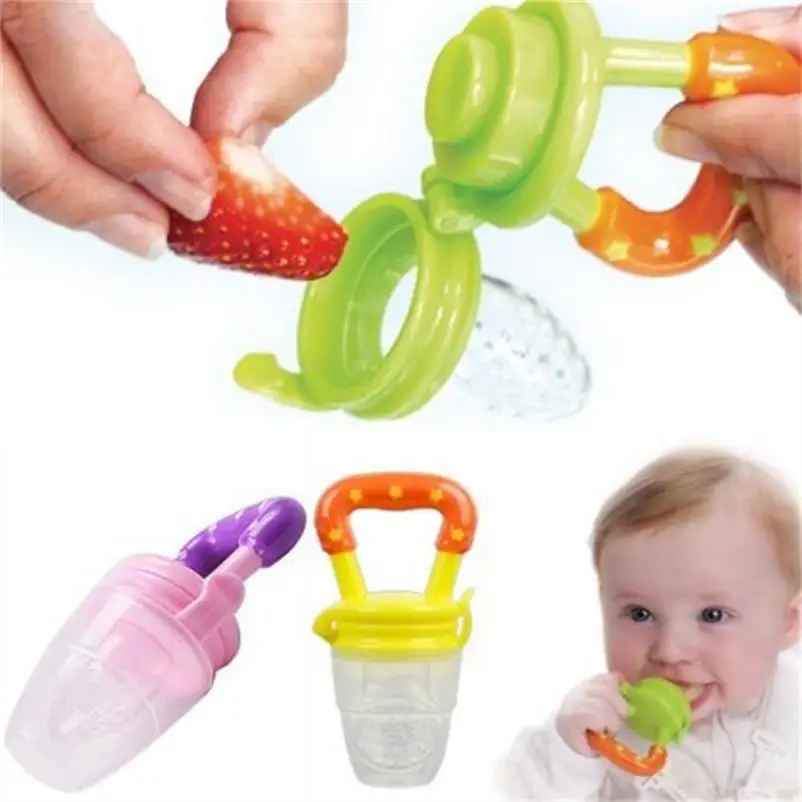
But, now your baby wants finger foods and seems unsatisfied with baby cereal.
Yes, the pace in the first year of life with food is quick.
Another challenge is the wide range of nutrients babies need in the first year.
Key nutrients for brain development, bone growth, and sufficient calories and protein for weight gain and kid’s growth should be top of mind.
Being mindful of these and fitting them all in can feel overwhelming.
If that isn’t enough to worry about, the repercussions of moving too slowly with food transitions can have its own set of ramifications.
For example, your baby may lose interest in infant rice cereal if they see it every day and at most meals.
Or, your baby may tire of exploring solid foods if she isn’t progressively challenged with new textures and flavors.
She may even prefer purees, baby food pouches, or get stuck on a liquid diet (hello, sippy cups of milk), if she isn’t challenged with more food flavors and textures.
If you’re like most parents I know, you want to get the baby food stages right.
From setting a reasonable baby feeding schedule to knowing when to start solids and make important baby food transitions, not only do you need to know what to do, you need to know what not to do, as well.
Signs You’re Hindering Self FeedingIf feeding your baby gives you a nagging feeling that things are getting off track or aren’t going as well as planned, you may be making some feeding mistakes.
Whether you need more information, or got the wrong advice, you may unknowingly be caught up in some very common mistakes.
If your baby isn’t gaining weight as predicted, is struggling with the spoon or baby led weaning, or if transitioning to a balanced meal plan isn’t going as well as you had hoped, you might be hindering your baby from moving forward with eating.
Your feeding style and approach may be counterproductive, especially if you’re using negative feeding practices.
Unfortunately, these can interfere with your baby’s eating, development, and food learning.
4 Self Feeding Mistakes You’ll Want to AvoidIn my line of work, I see several mistakes parents make when feeding their kids.
It’s not that I look for snafus, it’s just that when parents are really struggling, they show up on my doorstep.
As a way to help you side-step some of these challenges, I’ve outlined the top four feeding mistakes I see parents make with their baby.
Some are related to the process of feeding, while others involve food selection.
Mistake # 1: Trying to Keep Baby Clean while EatingIn the quest to stay clean and tidy (and lessen the laundry load), you may be swiping your baby’s mouth with a washcloth after every bite, staying with spoon feeding (because it’s cleaner), or avoiding messy foods to cut down on the time and effort it takes to clean up after a meal.
Why is this a mistake?
It robs your baby of important learning experiences, such as exposure to different textures, smelling food completely and learning how to manipulate food using his hands and mouth.
Serious investigation happens during meal time, and there’s no better way to learn about food than to get down and dirty with it.
Those pictures you see of babies covered head to toe in yogurt, spaghetti sauce and cake?
Yeah, that’s what I mean.
Case in Point:Long ago, I taught one of my clients to let her baby self feed with a spoon. I asked her to refrain from using the washcloth until the end of the meal, and charged her with the task of offering her daughter more food variety.
After implementing these interventions, both mom and baby started having a grand time with meals!
How to Keep Baby Clean While EatingUse the kitchen sink as a back-up bathtub.
Stock it with towels, soap and plastic measuring spoons and cups so your baby can go from high chair to kitchen tub (with supervision, of course) for a quick clean up.
Get the Food & Nutrients for Baby’s Brain!
Mistake #2: Spoon-feeding Your Baby for Too LongThis ties into #1 as a way to keep a cap on the mess.
But also, there may be a misconception that babies need to be spoon-fed for a year.
Not true.
Babies can begin the transition to chopped, table foods around 8 months of age.
And if you’re a follower of baby led weaning, you know that solids can be introduced at 6 months.
By one year, your baby should be eating table food. In other words, the food your family is eating.
You’ll just modify this into age-appropriate textures (shredded, chopped, etc), and encourage baby self feeding (with assistance as necessary).
Your baby should also be using an open-top cup with small amounts of liquid so that spills are minimal.
Of course, follow your baby’s developmental progress and cues for readiness to see when the time is right to transition to more textured finger foods.
If you’re testing solid foods with a baby led weaning approach, be sure to read about iron and baby led weaning in this post or grab my up-to-date, step-by-step book called The Smart Mom’s Guide to Starting Solids.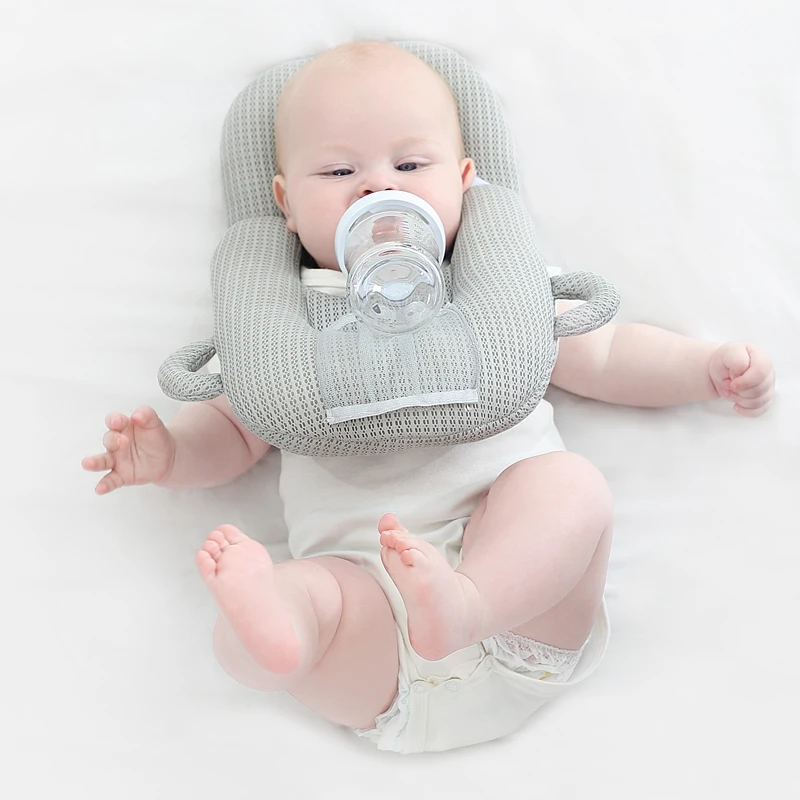
It includes advice for spoon-feeding, baby led weaning and guidance for using both to optimize nutrients and self-regulation of eating.
When to Stop Spoon Feeding BabyBaby Ben was 14 months and still being spoon-fed.
He came to me because he wasn’t gaining weight and his length had fallen behind.
He was simply disinterested in the spoon—he wanted to feed himself, and he didn’t want mush anymore—he wanted the real food his family was eating.
Most babies will want to start self feeding between 6 and 8 months.
This usually coincides with the development of the pincer grasp.
While Ben’s mom was understandably afraid to give up spoon-feeding (because he wasn’t growing well and she wanted to be sure he ate enough), once she introduced table foods, gave him some independence, and let him eat to his own satisfaction, Ben started to thrive again.
Most babies will want to start self feeding between 6 and 8 months. This usually coincides with the development of the pincer grasp. #startingsolids #selffeeding Click To Tweet
This usually coincides with the development of the pincer grasp. #startingsolids #selffeeding Click To Tweet
I believe all babies should receive real, natural, unadulterated foods of all flavors, with an emphasis on food introduction and lots of food variety and exposure.
But I see a trend in feeding babies that emphasizes fruits, vegetables and whole grains.
This can become a problem because babies have limited stomach capacity and these foods are filling.
When your baby’s tummy is full, there’s a risk of missing other important foods and nutrients such as choline and DHA.
Whole grains, fruits and veggies also tend to be low in fat, which is an important nutrient for babies and their brain growth.
Certainly babies need these healthy foods, but they also need meat (or non-meat substitutes such as beans), fortified cereal, healthy fats and dairy (or fortified non-dairy) sources.
In fact, if I had the opportunity to re-write the food introduction guidelines, I’d advise the following:
- Meat First (because it’s full of iron, zinc, B vitamins, choline and other nutrients important for brain development.)
- Vegetables (because these are a learned taste and flavor and need more time and exposure for acceptance.)
- A variety of iron-fortified whole grains, fruit, and dairy products (or non-dairy alternatives if necessary, introduced as yogurt and cheese or as a baked in ingredient. (Note: no liquid milk until one year of age.)
Of course, there’s eggs, fish, peanuts, and nut butters — the food allergens that need to be introduced before 12 months, too.
My stance on “which foods first” is based on nutrient priorities and your baby’s budding flavor palate.
[Read: How to Introduce Peanuts to Your Baby]
Case in Point:Josh, at 13 months, was eating a high fiber diet, filled with whole grain breads, lots of vegetables and fruits, and very little added fat.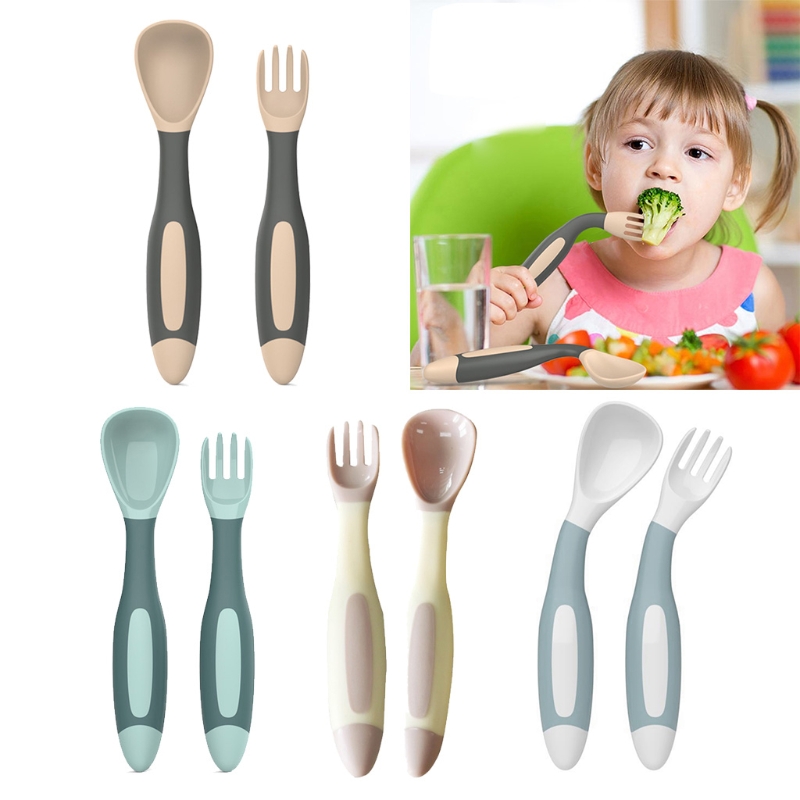
In fact, his mom stated,
“I never thought to add fat to his meals—I thought that would be unhealthy.”
Josh’s diet appeared very healthy on paper, but in reality, it wasn’t meeting his nutritional needs.
For example, babies need 40-50% of their total calories in the first year from fat.
Josh certainly wasn’t getting this.
Once Josh’s mom understood that babies need a good amount of fat daily and where and how to get it, she was able to plan more appropriate meals for him.
The added benefit?
With fat, foods (especially vegetables) were tastier and he ate better.
Mom opened up to more variety (French toast, pancakes, sandwiches, etc—all cut up in bite-sized pieces) and Josh enjoyed eating again.
Mistake #4: Allowing Bites or Gulps of Adult FoodsJust a little sip of my coffee? Sure.
A bite of my brownie? Why not!
What’s the harm in a little sip of soda, a taste of coffee, or a bite of a brownie?
Nothing immediate, but over the long haul, you might find your little infant growing up to be a soda swigging, sweet tooth kid if you’re not careful.![]()
It’s true—what we offer babies now influences their taste preferences later on.
Regarding sweets for babies, I suggest holding out until age two.
The American Heart Association makes the same recommendation.
What about the one year birthday cake?
It’s ok because it’s not a “regular” offering.
Avoiding sugary foods early in life may help curb your baby’s sweet tooth.
She may kick the sweet preference into high gear later on, but you’ll have armed her with early exposure to healthier fare.
Remember I said those tummies are tiny?
They don’t give much leeway for sweets. I wouldn’t want you to sacrifice nutritious foods for them.
I also recommend holding off on caffeine, too.
Babies don’t need a stimulant (aren’t we mostly trying to calm them down?!), nor do toddlers or children for that matter.
There’s no place for caffeine in a child’s diet—so if you can manage to avoid it, bravo.
Last, artificial sweeteners and colors fall into this category too.
Try to limit them, especially for babies and young toddlers, even if “just one bite” seems harmless.
The dose relative to body weight is considerable.
I’ve searched and searched, and there’s no upside to offering artificial food colors to young children.
Move Forward with Self Feeding WisdomOf course, don’t beat yourself up if you’ve made any of the above baby self feeding mistakes.
Just take a step forward and make the adjustments you need to feed your baby well and with confidence.
That’s the fast path to encouraging self feeding and helping your baby move through his feeding and eating milestones.
Need More Help with Encouraging Self Feeding?My book, The Smart Mom’s Guide to Starting Solids is a quick read that cuts through the fluff and gives you exactly what you need to know to feed your baby in the first year.
A baby feeding schedule, baby feeding chart, baby food stages, baby food chart, when to start solids and more!
Grab your copy today!
Don’t forget to check out our workshops, classes and guidebooks to help you raise nourished children, inside and out. And read, The Ultimate Guide to Baby’s Nutrition in the First Year.
And read, The Ultimate Guide to Baby’s Nutrition in the First Year.
BABY FEEDING MISTAKES | AVOID 4 Baby Blunders & Start Your BABY on a HEALTHY EATING PLAN (For Real!)
Watch this video on YouTube
This post was updated September 2020 from its original.
All by myself: how to teach a child to eat on his own?
Family and children
Some children deftly use a spoon already at the age of one, others do not want to give up their mother's help even at three. Everyone has their own age to start self-feeding, but it is never too early to teach a child to hold appliances in his hands. Pediatricians advise starting lessons from seven months. ELLE - about techniques that will help the baby quickly get used to the table.
Start with hints
Introduce the spoon first. He can turn it in his hands and try it on the tooth, studying how it works. Then put the cutlery next to his plate and do other things in the kitchen - sooner or later the baby will show curiosity and try to scoop up food for them. At the same time, be sure to consider the consistency of the dish: viscous porridge is really more convenient to eat with a spoon, but meatballs are much easier to take with your hands, so such a dish will nullify the entire lesson. It usually takes two to three weeks for a baby to learn how to bring a spoonful of food to his mouth.
At the same time, be sure to consider the consistency of the dish: viscous porridge is really more convenient to eat with a spoon, but meatballs are much easier to take with your hands, so such a dish will nullify the entire lesson. It usually takes two to three weeks for a baby to learn how to bring a spoonful of food to his mouth.
Learn with ease
You can also learn how a spoon “works” outside the kitchen and dining room, because the main thing in this matter is to develop a skill. For example, a child's spatula is very similar to a spoon, which means playing in the sandbox can be a great workout. Together with your child, scoop up the sand as carefully as possible and arrange it in molds, as if baking cakes. A dinner party at the toys will also not be in vain: using the example of toy dishes, explain why each cutlery is needed, and then feed the “guests” with a spoon together with the baby.
Get interested in food
Every time you force your child to finish eating something or rush him, you lower his concentration, causing negative associations with the process of eating, and besides, you risk causing digestive problems for the baby.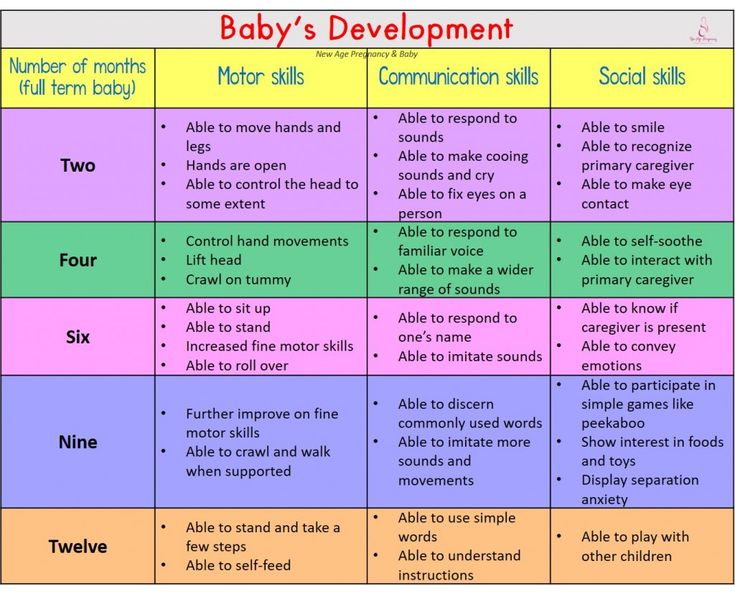 Food should be fun and interesting, so the best way to learn how to use appliances is on your favorite dishes, be it fruit puree, meat casserole or cottage cheese dessert. Treat serving with imagination: fried eggs can easily be turned into a funny face, broccoli and cauliflower into a bouquet of flowers, and porridge can be decorated with a pattern of berry sauce.
Food should be fun and interesting, so the best way to learn how to use appliances is on your favorite dishes, be it fruit puree, meat casserole or cottage cheese dessert. Treat serving with imagination: fried eggs can easily be turned into a funny face, broccoli and cauliflower into a bouquet of flowers, and porridge can be decorated with a pattern of berry sauce.
Avoid persuasion
We used to be taught to eat a spoonful of porridge for mom, a spoonful for dad, and so on for all relatives in order, until the plate is empty. Today, psychologists do not recommend persuading a child to eat, as well as praising him for the portion he has eaten, because this interferes with the natural perception of food. Let food become for him a means of satisfying hunger, a certain element of the daily routine, but not a way to earn parental attention and affection. Praise and encouragement stands for more substantial accomplishments than a regular breakfast.
Be patient
Children are very inquisitive and want to feel and taste food.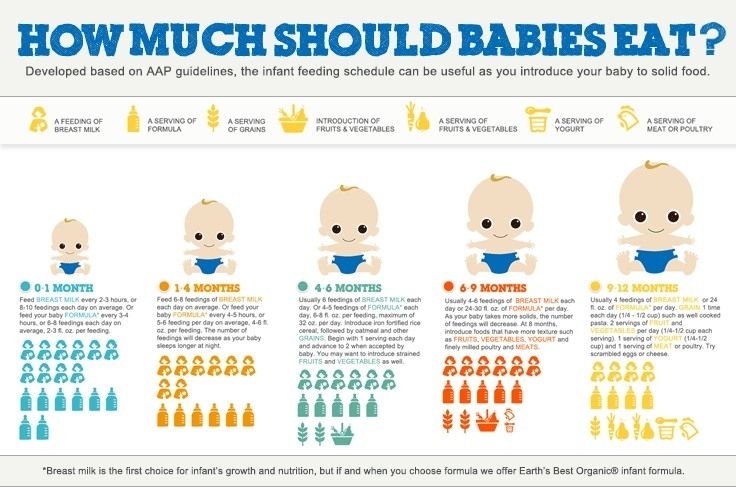 Be prepared for the fact that the porridge during the first "practice" will be on the floor, walls and curtains - this is not a reason to stop trying. Many mothers, wanting to keep cleanliness, cannot stand it and take the spoon in their hands again, but in vain. Yes, the child will not immediately begin to hold bread in his left hand, but a spoon in his right. He will spill the porridge as he brings it to his mouth, but gradually he will start to get it right. Be patient, because it is the key to success in the difficult task of education and will definitely come in handy in the future.
Be prepared for the fact that the porridge during the first "practice" will be on the floor, walls and curtains - this is not a reason to stop trying. Many mothers, wanting to keep cleanliness, cannot stand it and take the spoon in their hands again, but in vain. Yes, the child will not immediately begin to hold bread in his left hand, but a spoon in his right. He will spill the porridge as he brings it to his mouth, but gradually he will start to get it right. Be patient, because it is the key to success in the difficult task of education and will definitely come in handy in the future.
Invite the child to the table
By copying the behavior of adults, we learn faster, so when the baby is together with everyone at the common table, he will involuntarily repeat your movements - at first awkwardly, then more confidently. In order for him to feel free, it is important to provide a comfortable "seat". In Scandinavia, generations of children have mastered self-catering at a common table on the Tripp Trapp® highchair from the Norwegian children's brand Stokke®. The original design was invented by Peter Opsvik back in the 70s - the designer wanted to create a chair that would grow with the child. The Tripp Trapp® Baby Set insert and highchair cushion with bright patterns will help even the smallest to feel like a full-fledged member of the family at the “adult” table. The stable support of the highchair protects against accidental falls, which is important for fidgets, and the high seat ensures constant eye contact with mom. An important advantage: becoming closer to you during lunch, the child will not be capricious and require attention. In addition, the seat and footrest are adjustable in height to "grow" with the child. The Tripp Trapp® chair can withstand weights up to 80 kg, which means it will serve its owner for many years.
The original design was invented by Peter Opsvik back in the 70s - the designer wanted to create a chair that would grow with the child. The Tripp Trapp® Baby Set insert and highchair cushion with bright patterns will help even the smallest to feel like a full-fledged member of the family at the “adult” table. The stable support of the highchair protects against accidental falls, which is important for fidgets, and the high seat ensures constant eye contact with mom. An important advantage: becoming closer to you during lunch, the child will not be capricious and require attention. In addition, the seat and footrest are adjustable in height to "grow" with the child. The Tripp Trapp® chair can withstand weights up to 80 kg, which means it will serve its owner for many years.
At Stokke®, great attention is paid to the materials from which strollers and children's furniture are made. So, premium quality wood was chosen for the famous chair. At the factory, the chairs are painted in different colors, and you can choose the shade that best suits your child: rich red for energetic toddlers, soft pink for young ladies, or a versatile natural wood tone. Thanks to its unique design, Tripp Trapp® will fit perfectly into any interior.
Thanks to its unique design, Tripp Trapp® will fit perfectly into any interior.
Surround your child with personal items
Your own set of dishes will also provide comfort during the first independent meals: a colorful non-spill cup, a plate with a beautiful pattern on the bottom to make it more interesting to finish eating porridge to the end, your own cutlery (sometimes they are released with a special handle - its curved shape "tells you how to properly hold a fork or spoon") or a Tripp Trapp® Table Top with interchangeable patterns. When playing with dishes, the baby does not think that he can break it and get hurt, so make sure that his cups and plates are made of food-grade plastic. It is best to choose dishes together with the child so that he can express his preferences through it. In addition, a cheerful design will allow you to form an attitude towards food as an exciting process.
The Tripp Trapp® Highchair, one of your baby's first personal items, can also be customized with a name or nickname laser engraved on one of the backrest slats. This will show your child that his chair is special and was made just for him. The engraved inscription is treated with special oil, and the wood retains its color for years. Just imagine how in 10-15 years a son or daughter will remember moments of childhood using a personalized ergonomic chair. Engraving can be done free of charge at the Stokke® Flagship Store at the Central Children's Store on Lubyanka (3rd floor) in Moscow.
This will show your child that his chair is special and was made just for him. The engraved inscription is treated with special oil, and the wood retains its color for years. Just imagine how in 10-15 years a son or daughter will remember moments of childhood using a personalized ergonomic chair. Engraving can be done free of charge at the Stokke® Flagship Store at the Central Children's Store on Lubyanka (3rd floor) in Moscow.
As an advertisement.
Tags
- Children
How to teach a child to eat independently
A spoon for mom, a spoon for dad - this is what any loving parent probably says while feeding their baby. However, the introduction of complementary foods and similar feeding is only an intermediate step in the development of a child: from breastfeeding to full self-feeding. How to make the process of learning food “on your own” as simple and easy as possible?
Everyone will learn this
The most important and basic rule when a small child learns to use a spoon, plate, cup, bottle, fork and knife correctly is to have maximum patience.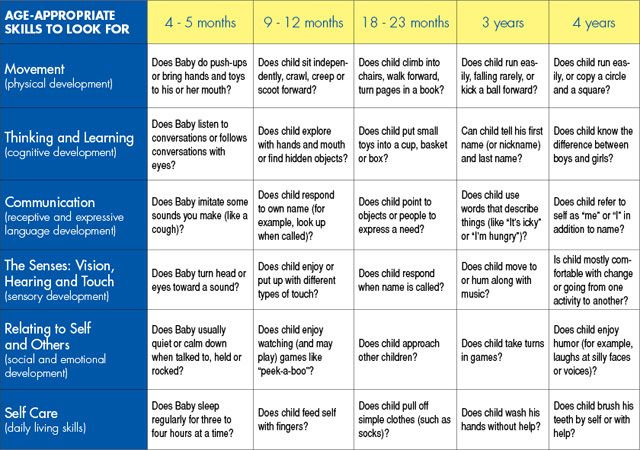 Understand: shouting, rushing or irritating you will not help the baby in any way. On the contrary, the process will slow down for him, and with constant abuse from his parents, almost a reflex may even develop - nutrition for him will automatically mean a scandal, which, of course, does not contribute to the development of a healthy appetite and, accordingly, the whole body. Agree, in the end, at some point, absolutely all people master the wisdom of self-catering - such as the ability to use the potty or sleep in a separate bed away from mom and dad. Therefore, just carefully clean the kitchen or dining room after the next "lesson", wash clothes and the child - and continue all over again after a few hours ...
Understand: shouting, rushing or irritating you will not help the baby in any way. On the contrary, the process will slow down for him, and with constant abuse from his parents, almost a reflex may even develop - nutrition for him will automatically mean a scandal, which, of course, does not contribute to the development of a healthy appetite and, accordingly, the whole body. Agree, in the end, at some point, absolutely all people master the wisdom of self-catering - such as the ability to use the potty or sleep in a separate bed away from mom and dad. Therefore, just carefully clean the kitchen or dining room after the next "lesson", wash clothes and the child - and continue all over again after a few hours ...
When to start training, at what age? Here everything is strictly individual. Some children are already ready by 7-8 months, others at 1.5-2 years persistently ask to be spoon-fed. But usually, on average, around the year, the development of a little man already allows you to confidently try to hold the same spoon and direct it into your mouth.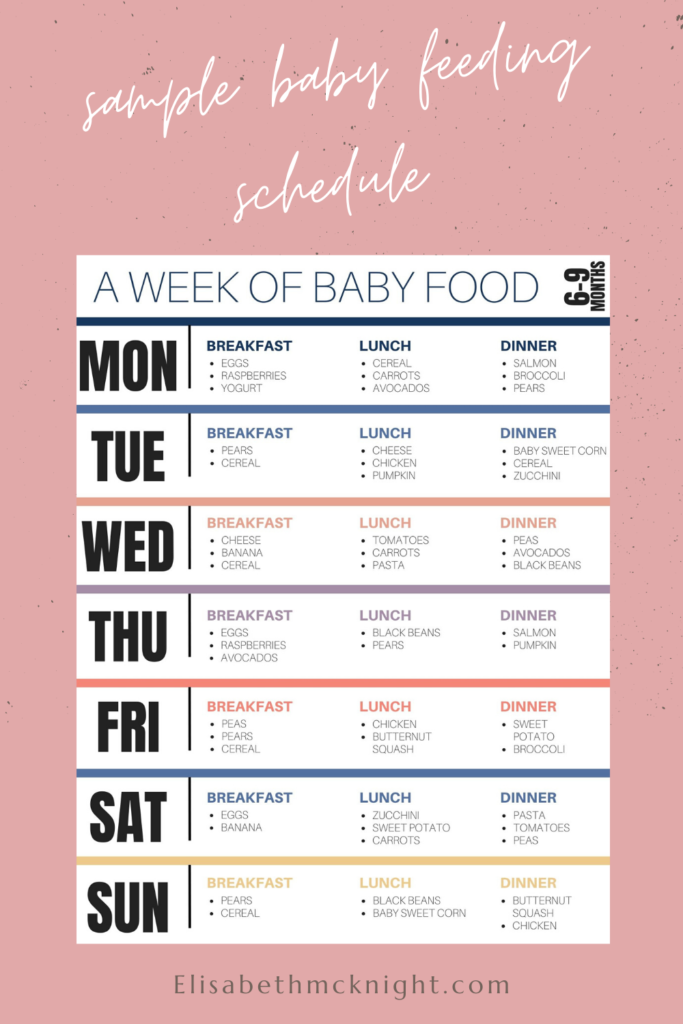 It is hardly worth forcing to do this, but if the baby, on the contrary, takes the initiative, reaches out to grab it himself in order to scoop porridge from the plate, lick it, “feed” the mother, of course, you shouldn’t interfere - such interest is only a plus, it can to a noticeable extent help you. Therefore, watch your child - he himself is the best indicator when it's time to start!
It is hardly worth forcing to do this, but if the baby, on the contrary, takes the initiative, reaches out to grab it himself in order to scoop porridge from the plate, lick it, “feed” the mother, of course, you shouldn’t interfere - such interest is only a plus, it can to a noticeable extent help you. Therefore, watch your child - he himself is the best indicator when it's time to start!
How to organize training directly?
In order for a child to learn to eat on his own faster and with fewer problems, it is worth learning a number of certain rules and techniques, an approximate list of which includes the following points:
Introduce your baby to the spoon as early as possible, even before the introduction of complementary foods. This object should be familiar to him: it is better that he turn it in his hands, like a rattle or a cube, try it by touch and taste, knock on it - in general, he completely mastered and got used to it. Then she will not frighten him and will not cause rejection either at the moment of weaning from her mother's breast, or later, when she will need to wield it on her own.
Buy plastic utensils. You can also use the standard: metal, ceramic or gift silver. But for a very young child, they are not very suitable: such spoons and plates may seem unpleasant to the touch, cold, hard for delicate gums, and heavy. It is important that the plastic is unbreakable, food-grade and free of harmful dyes - the quality certificates from the seller will tell about this.
Choose a children's set. Such dishes are most adapted for a small child: the spoon has a special grip for children's fingers, the plate has high edges (and sometimes even suction cups so that it cannot be knocked over from the table!), The mug has two handles, and the fork and knife are not sharp, so as not get hurt. Well, of course, such dishes are usually made bright, with attractive patterns and designs to interest the child.
Prepare a place. Not a single child manages to bring soup or mashed potatoes from a bowl to their mouths whole, either from the first, or from the second, or even from the tenth time. Therefore, be prepared that at first they will be literally everywhere! And it’s better to immediately prepare the feeding area for subsequent cleaning: cover the table, children’s chair and the floor with oilcloth, remove everything valuable and afraid of moisture, move away from the wallpaper, grab a set of napkins.
Therefore, be prepared that at first they will be literally everywhere! And it’s better to immediately prepare the feeding area for subsequent cleaning: cover the table, children’s chair and the floor with oilcloth, remove everything valuable and afraid of moisture, move away from the wallpaper, grab a set of napkins.
Prepare your child. During such “lessons”, of course, the baby himself gets dirty. Therefore, at least a bib or an apron is required - and the larger it is, the better. Sometimes on sale there are special oilcloth jackets for teaching self-catering, but if the room is warm, you can do without clothes, leaving panties or a diaper. It’s easier to wash a child than to wash his clothes every day.
Pick a moment. Although parents should try to accustom their child to a certain daily routine, it is not worth forcing him to eat when he has no desire. This is especially critical for learning to use dishes. If the child is not hungry, he will not take this process seriously: it will either become a game for him, or simply cause a negative reaction. Therefore, teach when he really wants to eat, is not sick and is ready for a new one.
Therefore, teach when he really wants to eat, is not sick and is ready for a new one.
Show an example. Take a spoon, scoop up food with it, bring it to the baby’s mouth or your own, commenting on each of your actions (even if the baby is not talking yet). Then invite the child to try to repeat all this himself. Support is very welcome: help his fingers grab and hold the spoon, point the child's hand to his mouth - and after a dozen or two or three repetitions, he will understand what they want from him.
Pay attention to food. For the first attempts, the baby should like it and be moderately liquid (but not too much, the soup will spill). Also, do not put on a full plate, adding parts of the portion gradually - it is easier for the child to scoop up, and there is less risk of splashing, and the food itself will be warm (the learning process may be delayed). And one more thing: cook with a margin so that the baby, having “lost” part of the food, probably does not remain hungry.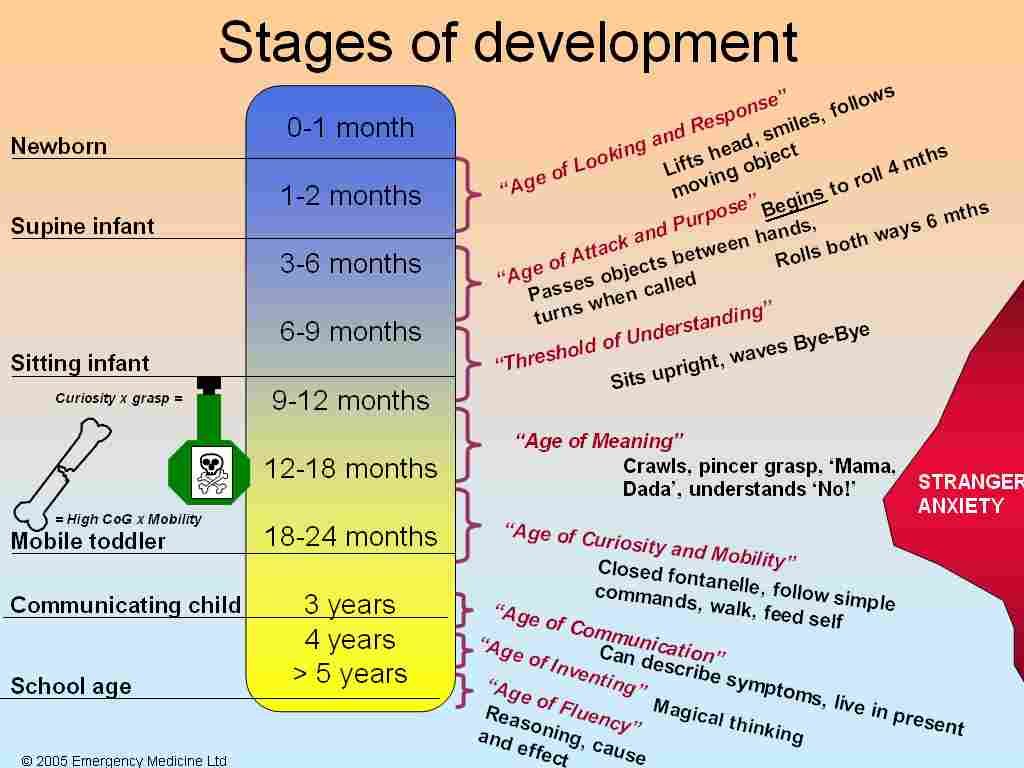
Stop games. It was possible to play with a spoon during the acquaintance, but not now - the child must learn this rule ironically. Therefore, gently, but very persistently, stop when he tries to knock over a spoon, plop it on the soup, spill everything on the floor, or throw it at mom and dad. And also watch when he is full to stop learning - it is at this moment that food for him can turn into a game, and he himself can be capricious.
Supplement. At first, there is nothing wrong with the fact that the child abandoned what he started right in the middle of the process. He could get tired, lose interest if he didn’t succeed, be afraid of spilled food on himself or the fact that he choked or choked on it. Therefore, in reserve, keep "your" spoon nearby so that you can finish your meal the old fashioned way, feeding him yourself.
Create a ritual. In order for the baby to take the rules of nutrition seriously, turn food into a ritual. To do this, you can decorate food (put on a plate of it, for example, funny faces), gather the whole family at the dinner table, set and clean the table together (including spilled ones) - this will increase the child's level of responsibility for their actions. And, of course, learn to wash your hands before eating and wipe your mouth after.
And, of course, learn to wash your hands before eating and wipe your mouth after.
Discuss learning with your family. Everyone who has access to feeding the baby (mother, father, grandparents, older brothers and sisters) must be aware of the ongoing training. Otherwise, at some point, the child will simply begin to be lazy: after all, why learn to eat with your mother yourself, if the same beloved grandmother feeds him from a spoon herself, without requiring him to repeat complex procedures?
Don't rush things. Start with a spoon, but you can wait a little with a cup, fork and knife. So, give out a cup when the baby has mastered the bottle (showing how to lean it against his lips and supporting it at first so that he does not choke), the plug is available by 1.5-2 years (at the same time, you need to pay attention to both ways of its use: picking up a side dish, and piercing pieces of food), and a knife - after 2-3 years.
Don't impose rules. Remember: your ultimate goal is for your child to eat on his own. But how he will do it, in principle, does not matter: the main thing is that it is clean and dry around. Therefore, if it is more convenient for him to hold the spoon a little differently than you showed, it does not matter. Moreover, do not force him to eat with his right hand - even if he is right-handed (there is nothing to say about the left-hander), he himself will determine how it is more convenient for him to deal with these devices.
But how he will do it, in principle, does not matter: the main thing is that it is clean and dry around. Therefore, if it is more convenient for him to hold the spoon a little differently than you showed, it does not matter. Moreover, do not force him to eat with his right hand - even if he is right-handed (there is nothing to say about the left-hander), he himself will determine how it is more convenient for him to deal with these devices.
Praise! It is very important for a little man to hear a high assessment of his work. Therefore, any achievement in the matter of teaching independent nutrition should be celebrated and encouraged. Of course, you shouldn’t overpraise, but the joy of mom and dad from the fact that he learned to hold a spoon and didn’t spill anything on the floor will raise his self-esteem and make him even more actively master the wisdom of this business.
Step aside. As the learning process progresses, it is important to start gradually giving the child more and more independence.









